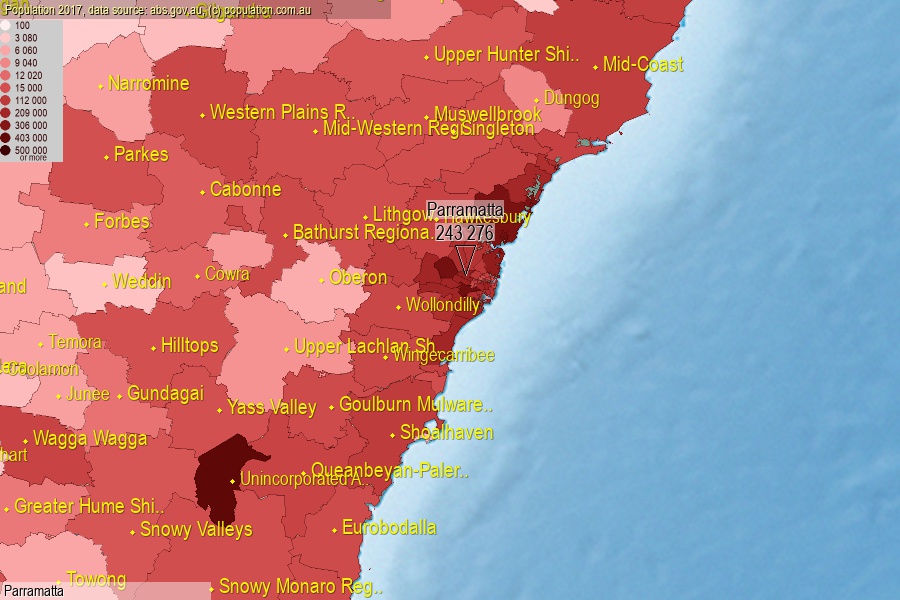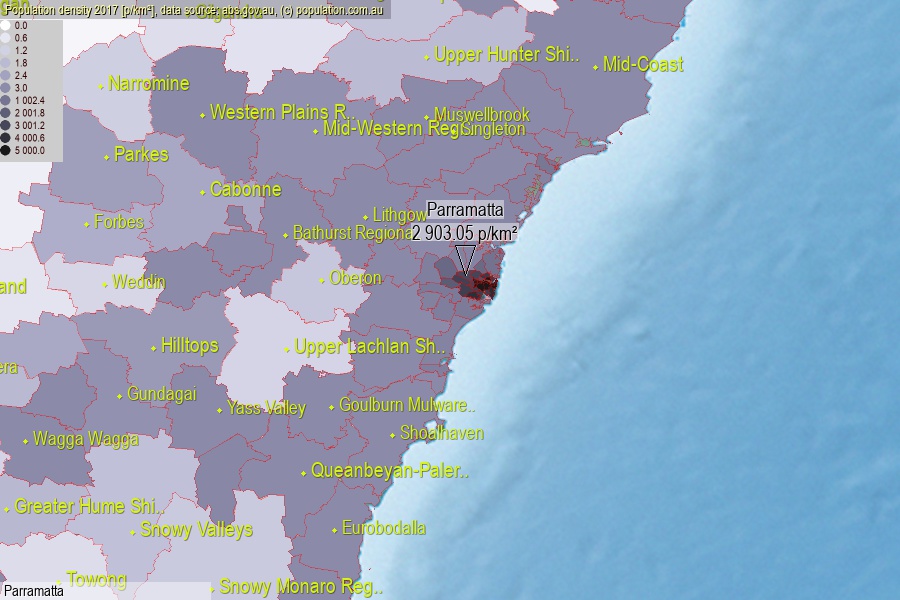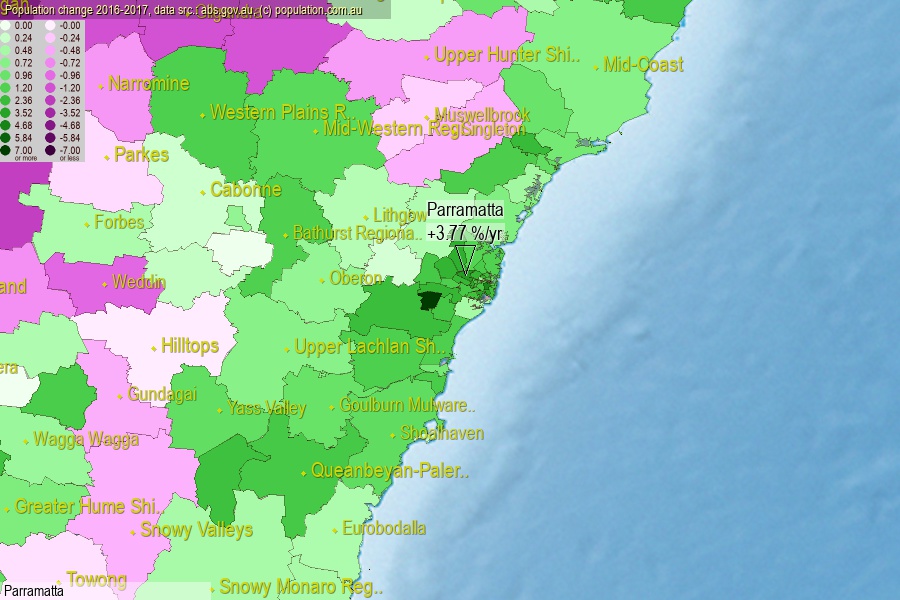 population.com.au
population.com.auLast official estimated population of Parramatta City (as Local Government Area) was 243 276 people (on 2017-06-30)[2]. This was 0.98% of total Australian population and 3.058% of NSW population. Area of Parramatta is 83.80 km², in this year population density was 2 903.05 p/km² . If population growth rate would be same as in period 2016-2017 (+3.77%/yr), Parramatta population in 2025 would be 327 025. [0]



Click to enlarge. Parramatta is located in the center of the images.
Population [people], population density [p./km²] and population change [%/year] [2]
[1996-2001] +3.53 %/Y
[2001-2002] +0.67 %/Y
[2002-2003] +0.98 %/Y
[2003-2004] +1.41 %/Y
[2004-2005] +1.51 %/Y
[2005-2006] +1.63 %/Y
[2006-2007] +2.35 %/Y
[2007-2008] +2.43 %/Y
[2008-2009] +2.87 %/Y
[2009-2010] +2.27 %/Y
[2010-2011] +1.82 %/Y
[2011-2012] +2.45 %/Y
[2012-2013] +3.05 %/Y
[2013-2014] +3.06 %/Y
[2014-2015] +2.96 %/Y
[2015-2016] +2.98 %/Y
[2016-2017] +3.77 %/Y
[0] Calculated with linear interpolation from officially estimated population
[1] Read more about LGA and Australian Statistical Geography Standard (ASGS) on abs.gov.au
[2] Population data from Australian Bureau of Statistics (Population and density: 2017; change: 2016-2017)
[3] Digital Boundaries: Australian Statistical Geography Standard (ASGS) 2016.